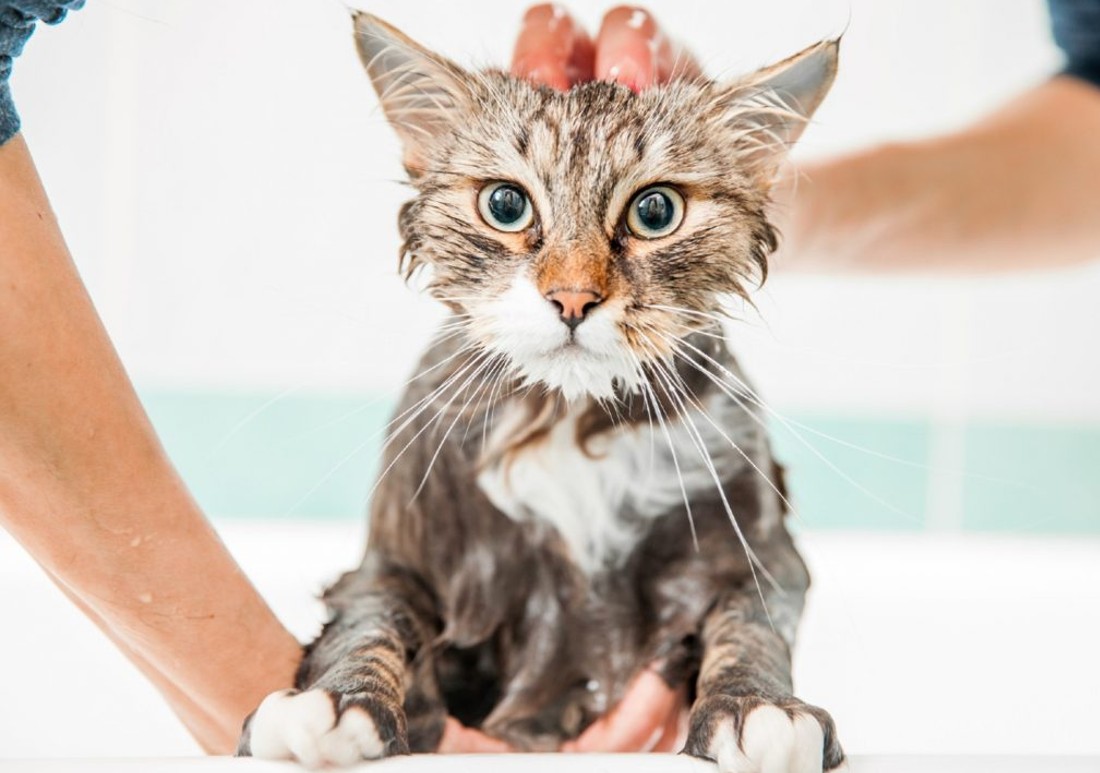How Often Should You Bathe a Cat? 10 Must-Know Grooming Tips

Cats are notorious for their self-cleaning habits. However, there are times when a little human intervention is necessary to help keep their coat and skin in prime condition. The frequency of bathing a cat can vary based on several factors, such as the pet’s breed, age, and lifestyle. Some cats may require more frequent baths due to their longer fur, while others may seldom need a bath.
Grooming is not just about cleanliness though—it’s also an opportunity to check the health of your cat’s skin and fur, identify any parasites, and strengthen the bond between pet and owner. With the right approach, you can ensure your cat stays well-groomed and comfortable, without causing unnecessary stress or discomfort.
Deciding How Often to Bathe Your Cat
Determining the ideal bathing frequency for your cat involves considering several factors:
Cats that spend time outdoors may get into substances they cannot clean off themselves or may be more prone to picking up parasites. In such cases, occasional bathing might be necessary. Conversely, indoor cats with minimal exposure to dirt and pests may rarely need a bath.
Regular use of a cat brush can help prevent mats and reduce the need for baths for long-haired breeds. Short-haired breeds typically require less grooming and, consequently, fewer baths. Regardless of hair length, if a cat has a skin condition or is prone to producing excess oil, more frequent bathing may be beneficial.
It’s also vital to consider your cat’s age and health. Kittens may need gentle cleaning if they’re learning to groom themselves, while senior cats could benefit from baths if they’re less diligent with their grooming habits due to arthritis or other health issues.
As a general guideline, bathing your cat once every 4 to 6 weeks could be sufficient, although many cats will rarely need a bath if they are healthy and their coat is well-maintained through regular brushing. Always consult your veterinarian to establish a grooming routine tailored to your cat’s needs and health status.
Keep in mind that bathing a cat too often can lead to dry skin and irritation, so it’s important to strike the right balance. Use a high-quality cat shampoo when bathing, and ensure the experience is as positive as possible to avoid creating a fear of water and grooming in your feline friend.
By paying attention to your cat’s requirements and behavior, you can determine a suitable bathing schedule that ensures their coat remains clean and healthy without overdoing it.
10 Essential Cat Grooming Tips
Regular Brushing
Maintain your cat’s coat by brushing it frequently. This removes dirt, loose fur, and debris and helps spread natural oils throughout their coat, keeping it shiny and healthy.
Start Young
If possible, acclimate your cat to grooming from a young age. This will help them become used to the process and reduce stress during grooming sessions as they grow older.
Nail Trimming
Keep your cat’s nails trimmed to prevent overgrowth and reduce the risk of injury to the cat and the furniture. Do so carefully to avoid cutting the quick, which can cause bleeding and discomfort.
Ear Care
Regularly check your cat’s ears for signs of dirt, wax build-up, or infection. Clean them gently with a vet-recommended product and a soft cloth or cotton ball.
Dental Hygiene
Brush your cat’s teeth with a toothbrush and toothpaste designed specifically for felines. This helps prevent dental issues and promotes overall health.
Fur Mats and Tangles
For long-haired breeds, detangle mats gently with specialized combs or brushes. If mats are severe, seek professional grooming assistance to avoid inadvertently hurting your cat.
Eye Cleaning
Wipe away any discharge from your cat’s eyes with a damp cloth. Use a separate cloth for each eye to prevent cross-contamination.
Use Cat-Specific Products
Always use grooming products, such as cat or kitten shampoo, formulated for cats since human products can harm their skin and coat.
Bathing Technique
Wet the cat from the neck down, avoiding the head when bathing. Apply cat shampoo, lather gently, and rinse thoroughly to prevent irritation.
Positive Reinforcement
Reward your cat with treats and affection during and after grooming to create a positive association. This will make future grooming sessions easier for both of you.
Following these essential grooming tips, you can help ensure your cat is comfortable, clean, and looking their best. Remember to approach grooming patiently and consult a veterinarian for any specific health-related grooming advice.
Summing Up
Balancing cleanliness and comfort for your cat requires understanding and respecting their grooming needs. While maintaining a clean coat is important for health reasons, ensuring that the grooming process is not a source of stress for your pet is equally crucial. By understanding your cat’s unique needs and preferences, you can achieve the perfect balance of cleanliness and comfort, ensuring a happy, healthy feline companion.
Your Pet’s Best Interest, Always
At Pet Institute, we take pet care seriously. We're dedicated to transparency, impartiality, and the well-being of your pets in every article, review, and recommendation we provide. Our unwavering commitment to these principles ensures that you, our valued reader, always receive reliable and unbiased information. Let us be your trusted guide in the world of pet care and companionship.